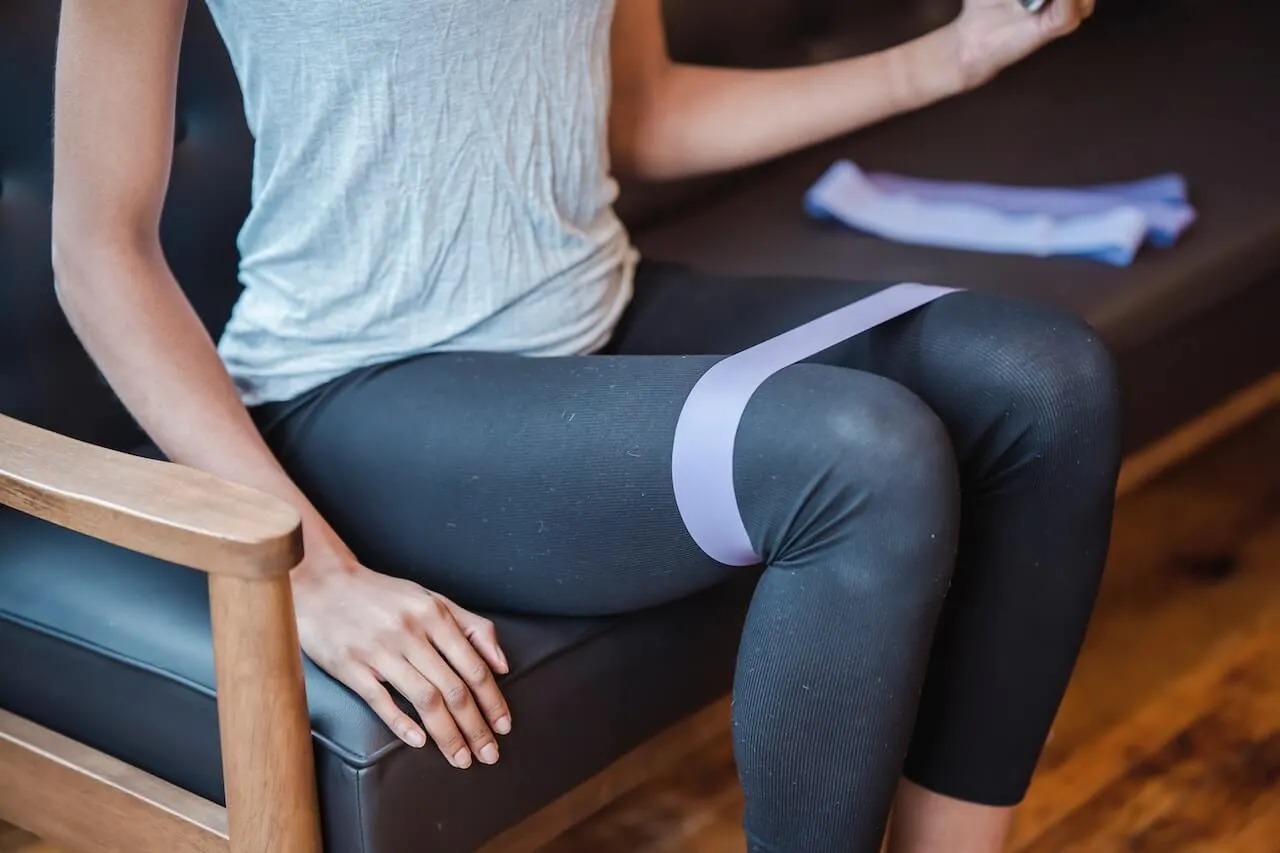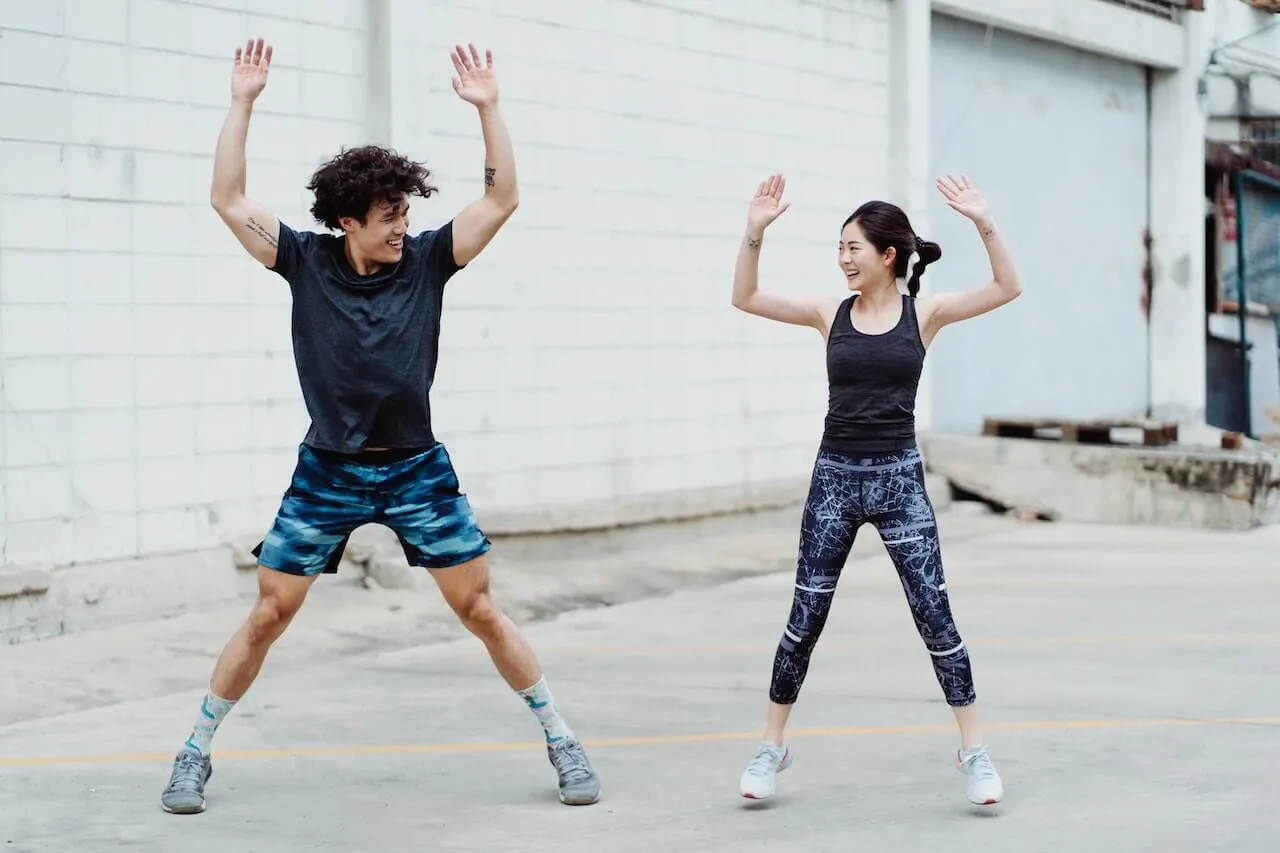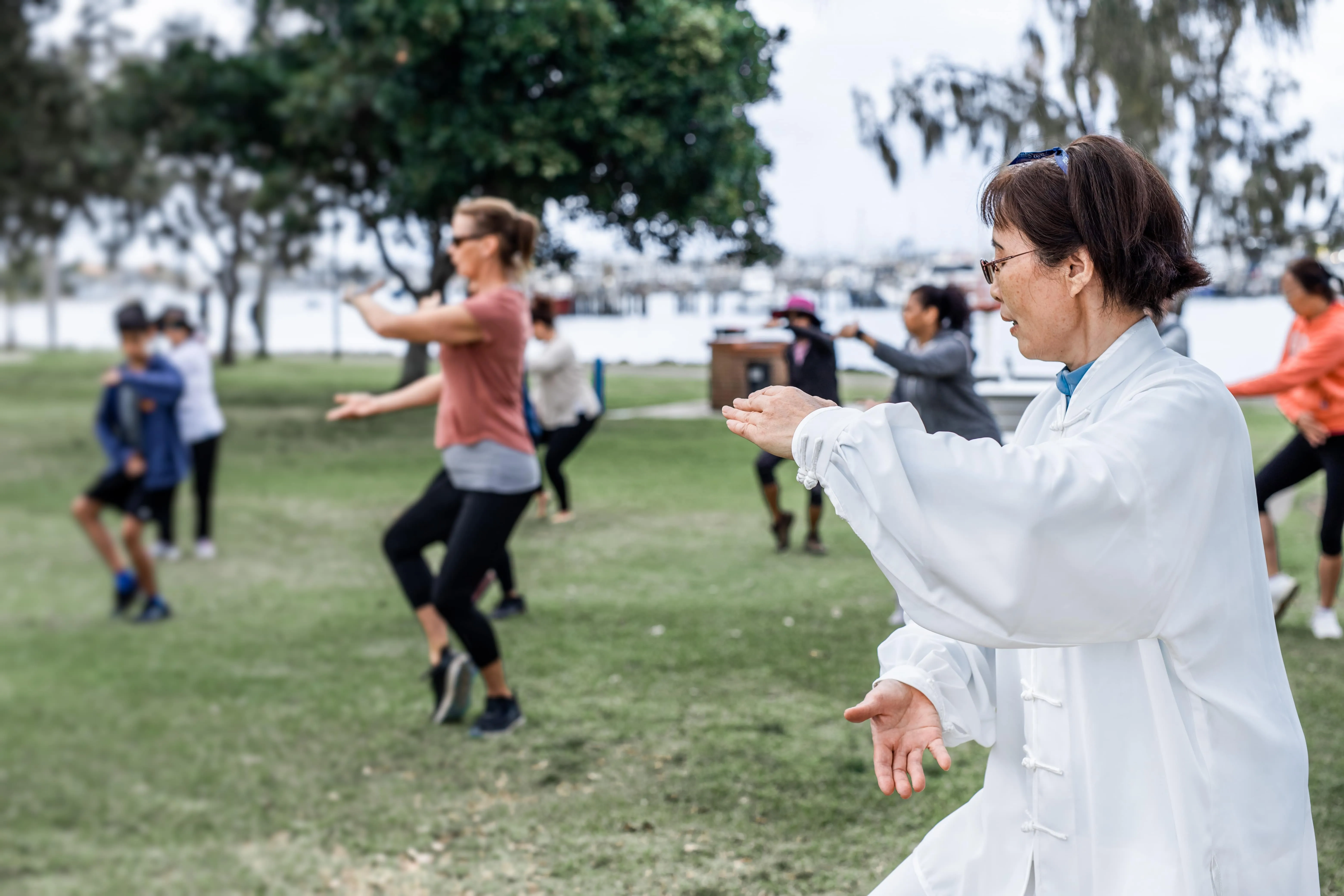Struggling with excess fat along your inner thighs? You are not alone. Toning and slimming down the inner thighs can be one of the most challenging fitness goals for many individuals. This stubborn fat accumulation often proves resistant to traditional exercises, making it a source of frustration for those aiming to achieve well-defined legs and improved body composition. The reasons behind inner thigh fat can be diverse, ranging from genetics and hormonal factors to lifestyle choices and diet.1 Understanding the multifaceted nature of this challenge is crucial in crafting an effective strategy to address it.
In this article, we will delve into the various causes of inner thigh fat and provide you with actionable tips and exercises to help you conquer this fitness hurdle, bringing you one step closer to achieving the sculpted thighs you desire and the fat loss you’ve wanted for a long time. Say goodbye to inner thigh fat and hello to confidence!
{{mid-cta}}
What Causes Inner Thigh Fat?
The accumulation of inner thigh fat is influenced by a combination of factors, and understanding the underlying causes is key to effectively addressing this stubborn issue. Genetics plays a pivotal role in determining where the body stores fat.3 Different individuals may have a predisposition to store fat in specific areas, including the inner thighs, abdominal area, and hips.3, 4 Additionally, body type contributes to the distribution of fat, with some body shapes naturally carrying excess body weight in the lower part of the human form.
Hormones also play a crucial role, as fluctuations can impact fat storage. For example, hormonal changes in estrogen and testosterone during puberty, pregnancy, or menopause may lead to increased fat deposition in the inner thigh region.1 Biologically, women tend to store more fat in the hips and thighs, often linked to reproductive functions.1 Understanding these factors provides valuable insights into the uniqueness of each individual's body composition and sheds light on why inner thigh fat can be challenging to target.
While understanding the contributing factors of fat storage, it is essential to recognize that there are two primary types of fat in the human body: subcutaneous and intramuscular.2 Subcutaneous fat is stored directly beneath the skin, contributing to the visible softness or thickness of the thighs. On the other hand, intramuscular fat is found within the muscle tissue itself. It is important to remember that not all body fat is detrimental to health; in fact, a certain amount of body fat - whether subcutaneous or intramuscular - is essential for overall well-being.5
Fat is essential for insulation, protection of organs, energy storage, hormone production, and proper cellular function. Striving for an unrealistic, extremely low body fat percentage can have adverse effects on health and well-being. Instead of fixating solely on eliminating all body fat, it's important to focus on achieving a balance that supports a healthy lifestyle. Embrace body positivity and recognize the value of a holistic approach to fitness. As we explore ways to address inner thigh fat, let's do so with the understanding that a healthy body composition involves maintaining a reasonable and sustainable level of body fat for optimal health.
4 Ways to Lose Inner Thigh Fat

From adopting a balanced diet to incorporating targeted exercises and staying adequately hydrated, these evidence-based tips are designed to guide you toward achieving those sculpted and confident thighs you've been aiming for. Say goodbye to frustration and hello to a more empowered you with these practical and actionable steps.
- Addressing Your Nutrition: Adopting a well-balanced and nutritious diet is essential for losing inner thigh fat. Focus on incorporating lean proteins, whole grains, and plenty of fruits and vegetables into your meals. Limiting processed foods, alcohol consumption, and excessive sugar intake can contribute to consuming fewer calories and overall fat reduction, including the inner thighs.6, 7
- Practice Mindful Eating: Practice mindful eating by paying attention to portion sizes and recognizing hunger and fullness cues. Avoiding overeating and emotional eating can prevent excess calorie intake, contributing to a healthier overall body composition, including the reduction of inner thigh fat.
- Drinking More Water: Drinking an adequate amount of water is crucial for overall health and can indirectly aid in losing inner thigh fat.9 Proper hydration supports metabolism and helps the body efficiently break down fats. Aim to drink between half an ounce and an ounce of water for each pound you weigh. For example, if you weigh 180 pounds, you want to aim for about 90-180 ounces of water daily, depending on your needs and exercise. This is a bit different than the standard “8 glasses of water per day” as the amount each person needs is very individualized to their body size.
- Exercising: Finding the right types of exercise that feel good for you is imperative to losing any body fat. The best approach is to mix it up during the week, engaging in some cardiovascular activity, 2-3 days of resistance-based training, and a few days that target your zone 4 or 5 heart rates through high-intensity training.8
<ol class="ol-type-a_second-level"><li>HIIT: Try incorporating high-intensity interval training into your workout routine, alternating between high-intensity bursts and periods of rest. This approach is effective in burning calories and can contribute to the reduction of body fat, including that in the inner thighs.</li><li>Strength: Integrate strength training exercises that target the muscles of the inner thighs, such as leg lifts and inner thigh squeezes. Building muscle in this area not only enhances tone but also contributes to the overall reduction of body fat, creating a more sculpted appearance.</li><li>Cardio: Engage in cardiovascular exercises like running, cycling, or brisk walking to burn calories and promote overall fat loss. These activities can be done at home and will elevate your heart rate, leading to increased energy expenditure and targeting fat in various areas, including the inner and outer thighs.</li></ol>
<p class="pro-tip"><strong>Also Read: </strong><a href="how-effective-are-resistance-band-workouts">How Effective are Resistance Band Workouts for Weight Loss?</a>.</p>
Best Exercise for Targeting Inner Thigh Fat
Ready to sculpt your inner thighs and unveil toned, shapely legs? This section is your go-to resource for the best exercises specifically designed to target and strengthen the muscles in your inner thighs. Whether you're a fitness enthusiast or a beginner, these proven exercises will help you achieve the definition and firmness you desire for a more confident and sculpted lower body.
- Walking Lunges: Start by standing with feet together and take a step forward with one foot, lowering your body until both knees are bent at a 90-degree angle. Push off the front foot to bring the back foot forward and repeat on the other side. This dynamic exercise engages the inner thighs and strengthens the leg muscles.
- Plie Squats: Similar to a “sumo squat,” stand with feet wider than shoulder-width apart, toes turned outward. Lower your body by bending your knees, keeping them in line with your toes as you sit your hips straight down to the floor. Return to standing by squeezing your glutes and inner thighs.
- Thigh Lifts: Lie on your side with your legs extended and place your top leg over your bottom leg by bending your knee and placing your foot in front of the knee of your bottom leg. Lift the bottom leg up to meet the thigh of the top leg using the inner thigh muscles of your bottom leg.
- Skaters: Begin by standing with feet hip-width apart and knees slightly bent. Jump to the side, landing on one foot while bringing the other foot behind in a diagonal position (think bowler's position). Then jump off your standing leg laterally and land on the opposite foot. Continue to jump from side to side.
- Walking: Simple yet effective, brisk walking is a low-impact exercise that engages the inner thigh muscles. Incorporating walking into your routine contributes to overall fat loss and provides a gentle yet effective workout for the inner thighs.
5 Exercises That May Make Your Inner Thighs Bigger

While the pursuit of toned and slim inner thighs is a common fitness goal, be aware that certain exercises, when performed incorrectly or excessively, can lead to muscle hypertrophy, making the inner thighs appear larger. Understanding the nuances of these movements is crucial for tailoring your workout routine to achieve the desired results and avoid unintended outcomes.
- CrossFit: CrossFit workouts often incorporate high-intensity, compound movements that engage multiple muscle groups, often using heavier weights. While beneficial for overall fitness, the intense nature of CrossFit can lead to muscle hypertrophy, potentially making the thighs appear larger.
- Weighted Leg Machine Exercises: Utilizing leg machines with heavy weights, such as leg presses or hip adductor machines, can target and stimulate significant muscle growth in the thigh area. While effective for building strength, these exercises may contribute to a bulkier appearance if not balanced with other workout components.
- HIIT Routines Targeting Legs: High-intensity interval training (HIIT) that heavily targets the legs with exercises like jump squats and burpees can lead to muscle development. While HIIT is excellent for burning calories, it's important to be mindful of its potential impact on thigh size, especially if performed excessively.
- Cycling: Engaging in regular cycling, especially at high resistance levels, can activate the thigh muscles and contribute to muscle hypertrophy. While cycling offers cardiovascular benefits, it's essential to balance this activity with exercises that promote slimming if that is the desired outcome.
- Sprinting: Sprinting involves explosive leg movements that primarily target the quadriceps, calves, and hamstrings. While beneficial for cardiovascular health and overall athleticism, frequent sprinting can lead to muscle growth in the thighs, potentially resulting in a larger appearance.
It's important to note that these exercises are not inherently bad for you, nor are they exercises you should avoid. However, the impact of these exercises on thigh size can vary among individuals, and they may lead to increased muscle girth more than a slim, sculpted aesthetic. Tailoring your fitness regimen to align with your specific goals, whether slimming or building muscle, is key to achieving the desired outcome.
Using a CGM with Signos: Real-Time Data, Backed by AI
Signos pairs a real-time glucose biosensor with AI trained on tens of millions of data points to deliver personalized, science-backed guidance for weight management and health. See exactly how your body responds, and take action.
Learn how it works. Ready to get started? Join now.
<p class="pro-tip"><strong>Learn More: </strong><a href="lower-belly-fat">How to Burn Off Your Lower Belly Fat</a>.</p>
Topics discussed in this article:
References
- Power, M. L., & Schulkin, J. (2008). Sex differences in fat storage, fat metabolism, and the health risks from obesity: possible evolutionary origins. British journal of nutrition, 99(5), 931-940.
- Cohen, P., & Spiegelman, B. M. (2016). Cell biology of fat storage. Molecular biology of the cell, 27(16), 2523-2527.
- Schleinitz, D., Böttcher, Y., Blüher, M., & Kovacs, P. (2014). The genetics of fat distribution. Diabetologia, 57, 1276-1286.
- Camilleri, G., Kiani, A. K., Herbst, K. L., Kaftalli, J., Bernini, A., Dhuli, K., ... & Bertelli, M. (2021). Genetics of fat deposition. European Review for Medical & Pharmacological Sciences, 25(1).
- Norgan, N. G. (1997). The beneficial effects of body fat and adipose tissue in humans. International journal of obesity, 21(9), 738-746.
- El-Zayat, S. R., Sibaii, H., & El-Shamy, K. A. (2019). Physiological process of fat loss. Bulletin of the National Research Centre, 43(1), 1-15.
- Laflamme, D. P., & Hannah, S. S. (2005). Increased dietary protein promotes fat loss and reduces loss of lean body mass during weight loss in cats. Int J Appl Res Vet Med, 3(2), 62-68.
- Scotto di Palumbo, A., Guerra, E., Orlandi, C., Bazzucchi, I., & Sacchetti, M. (2017). Effect of combined resistance and endurance exercise training on regional fat loss. The Journal of sports medicine and physical fitness, 57(6), 794-801.
- Thornton, S. N. (2016). Increased hydration can be associated with weight loss. Frontiers in nutrition, 3, 18.
- Armstrong, L. E., Barquera, S., Duhamel, J. F., Hardinsyah, R., Haslam, D., & Lafontan, M. (2012). Recommendations for healthier hydration: addressing the public health issues of obesity and type 2 diabetes. Clinical Obesity, 2(5-6), 115-124.




.svg)





%2520(1).webp)




.svg)
.svg)
.svg)
.svg)
.svg)
.svg)
.svg)
